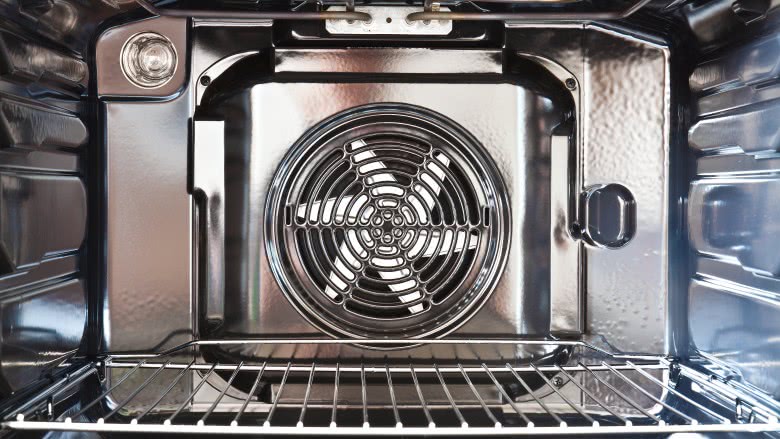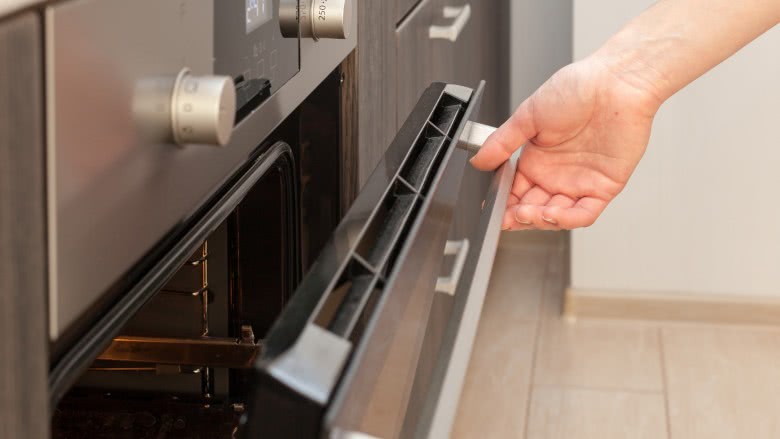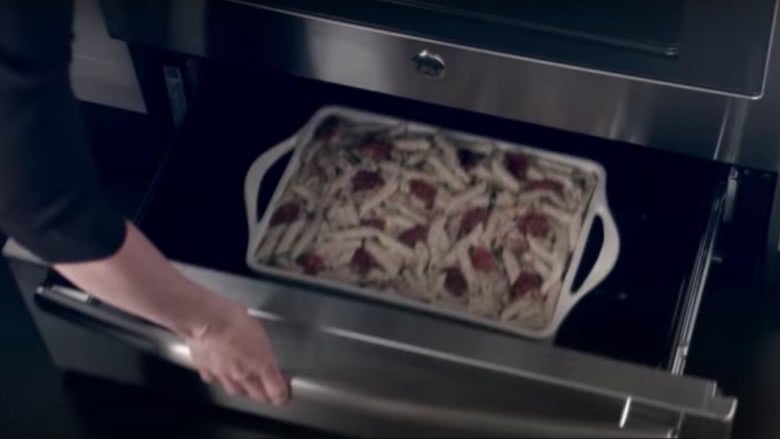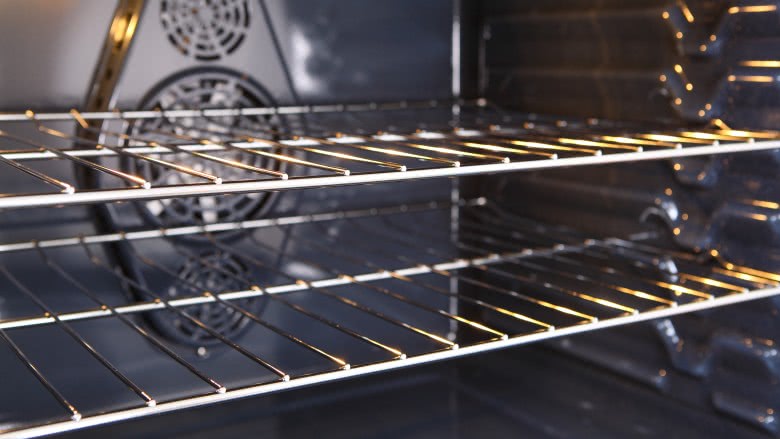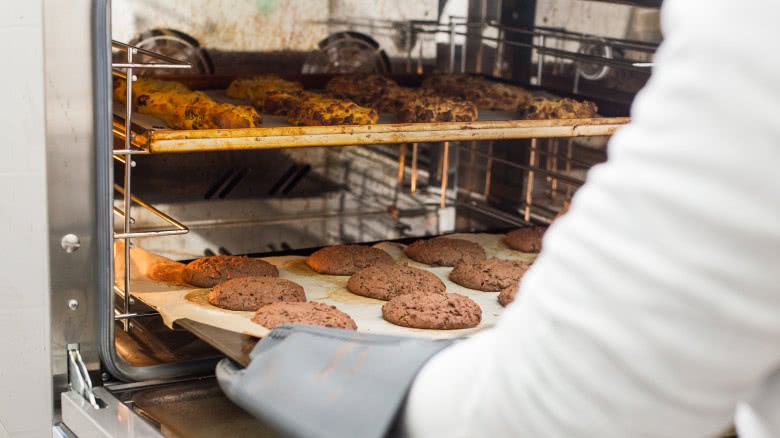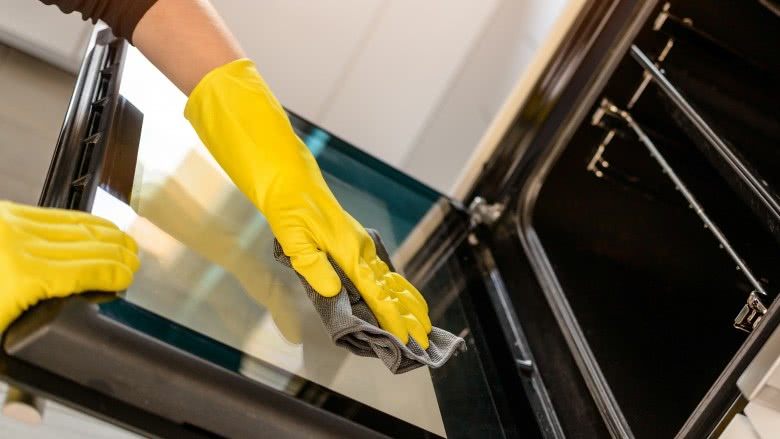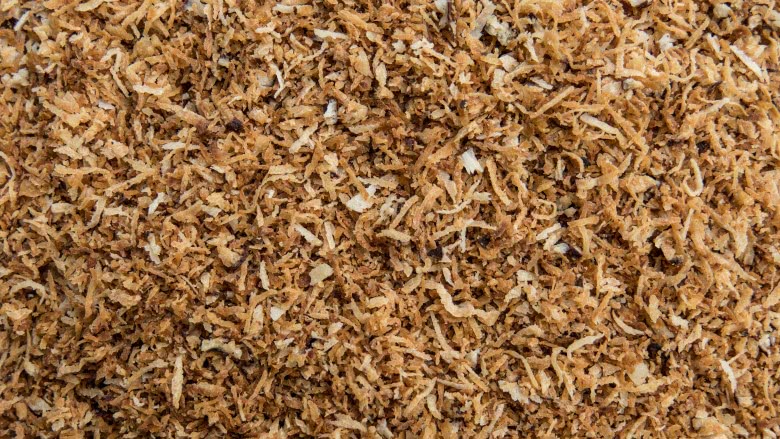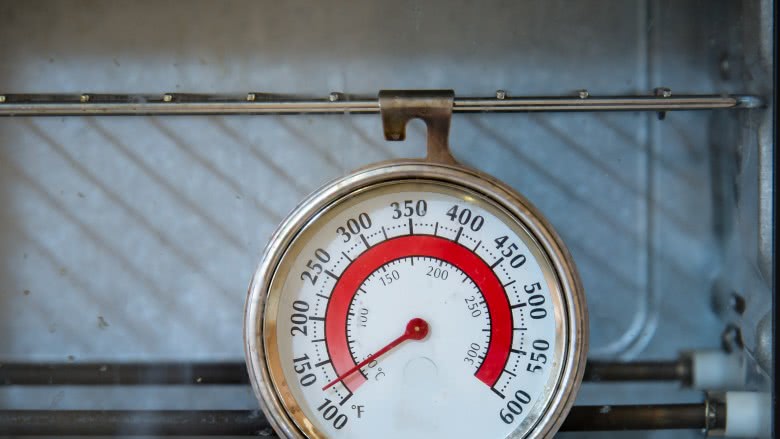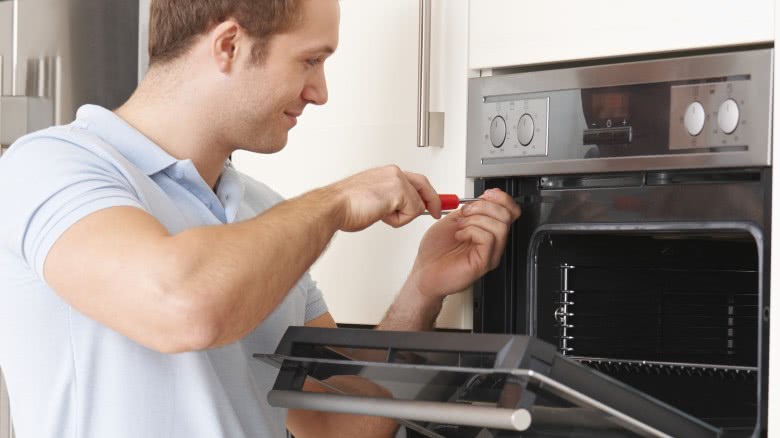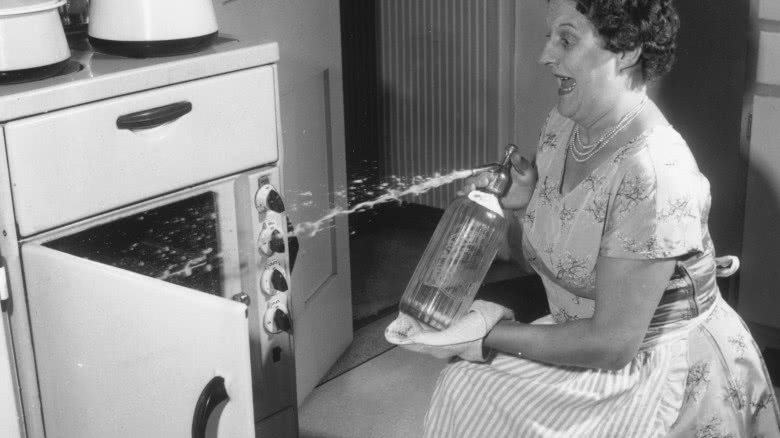How To Get The Most Out Of Your Oven
It's been a long time since anyone had to cook over an open fire, and all that natural gas and electricity, non-stick oven pans, chrome, and temperature controls have made turning prey into protein a much easier task than it once was, not to mention tastier. But just because your beautiful modern oven with all the bells and whistles might appear to be the last word in fire-and-forget kitchen technology, that doesn't mean there aren't a few things you can do to make it even better.
Burn in a new oven
You know that distinctive smell that comes with every new car? Well, it turns out ovens have their own version of the "new car smell," but it isn't something you really want to be living with. According to CNET, new ovens often have uncured binding agents in the insulation, protective oil residues, and even the occasional forgotten zip tie, that if not taken care of will add some distinctly un-homely odors, and potentially even smoke, to your first few attempts at dinner. And unless you spent your childhood downwind of a chemical factory, that's not a meal you will enjoy.
Fortunately however, there's an easy solution. Start by making sure you've removed all the zip ties and packing material that might be in your oven, then wash the inside surfaces and racks to remove any unwanted oils or manufacturing residues. Next open some windows, and turn on your kitchen hood if you have one, then set your oven to the highest temperature it will allow and let it run for half an hour. When the time is up, let it cool, then wipe it out one more time. In stubborn cases you may need to repeat this procedure more than once, but if you want your food to taste as good as your shiny new food factory looks, it's worth taking the time to do it right. As it turns out, this burn out procedure is also good for removing that new car smell...which would be great if it didn't remove the rest of the car at the same time.
Open the oven door when broiling
There are many important decisions we have to make in life: like, what do I study at college? Who should I date? Or even, vanilla or chocolate? But the one decision you don't now have to make is do I broil with the oven door open, or closed, because that question at least has a clear answer.
Broilers are great because they are like an indoor all-weather grill, and when used correctly they give your food a delicious brown crust — but do it wrong and your food will just be dry and overcooked. And according to Kitchn, the best choice for brown and delicious is door open. That's because if you keep the door closed, the moisture in the oven can't escape, but instead builds up along with the heat. This not only inhibits crust formation, but speeds the cooking, since by trapping the heat the oven acts like, well, an oven, and cooks the food from all sides. If you open the door however, the moisture and excess heat escape, giving the broiler more time to brown the outside before the inside gets overcooked. And that's great, because if you wanted your food dry and overcooked you could just use a microwave.
The bottom drawer is for warming, not storing.
It's great that ovens come with a convenient little storage drawer at the bottom, a place to put all your baking trays and pans that doesn't require a lot of searching when you're in the middle of screwing up a recipe. Unfortunately, despite its convenience as a place to get your oven pans stuck, storage might not be what that little drawer is for.
According to Real Simple that drawer might have a secret identity...at least to you and me anyway. The truth is that the space you've been shoving your pans in might actually be a warming drawer. The way to tell if you do have a warming drawer is either to look in the manual, or even look for a warning label on the drawer itself to warn against trying to actually cook food in there, because that's a bad idea. A warming drawer exists to help you keep cooked food warm until you're ready to serve it. Manufacturers know that sometimes you're cooking more food than will fit in your oven in one go. So to help you out they sometimes give you a place to put the already cooked food to stay warm while you finish up the rest.
If you do have a warming drawer under your oven you should make absolutely sure you only ever put hot cooked food in there. If you put uncooked food in there, instead of feeding you later, it might just make you sick. Because while that little space might have enough heat to keep already cooked food hot, if the food goes in there at room temperature it won't heat the food enough to cook it. But it will raise the temperature enough to put your food into the ideal range for bacteria growth, multiplying your odds of getting food poisoning, and of never using your warming drawer ever again.
Know where to put the racks
If you're like most people, you probably don't move your oven racks from one month to the next. In fact there's probably only one reason you move an oven rack, and that's because there wouldn't be enough room to get your latest conversation stopper in if you didn't. But if you're serious about getting the recipe right, that might be a mistake. Depending on what you're cooking, oven position can make a big difference, and depending on what you hope to achieve—browned on top, or evenly golden—that counts double.
According to Food52, for an even cooking you should try to position the racks so that the food is as close to the middle of the oven as possible. But if you want to get the bottoms of your cookies nice and crispy you should follow the advice of Epicurious and put them closer to the heating element on the bottom. Putting things closer to the top will give you a better brown on the top of your food, and if you have more than one pan of food to cook at once you should...continue reading.
Rotate your pans
The inside of your oven might look calm and peaceful, but when you turn on the heat things get interesting in ways your eyes can't see. Heat moves through your oven in several ways, including convection (hot air rising), and radiation (electromagnetic waves). As the oven preheats, the warming air starts to move around and the interior surfaces start radiating heat. This heat is pretty evenly distributed until you insert a pan, which interrupts the movement of air and blocks the radiation of heat, and changing the way food cooks in different spots.
According to bon appétit, if you put two pans in one above the other, the bottom pan will act as a barrier trapping more heat underneath, creating a cooler space between the pans, with another hot spot at the very top. If you don't do anything about that, the food on the bottom pan could be simultaneously blackened on the bottom and undercooked on top. There's an easy solution to this however—simply rotate your pans. About halfway through the cooking time, switch the pans around to to give them equal time in each place. If you have multiple pans on each rack, switch them around horizontally as well as vertically. The oven might look like bunk beds for food, but unlike teenagers, food shouldn't be allowed to hog the best spot if you want what's best for it.
Keep it clean
If you struggle to see through the glass of your oven, even with the light on, it might be time to get out the scrubbing brush. No-one likes to clean their oven, after all, the dirt is literally baked on. But if you don't then you might start to have problems. Apart from being unable to judge the progress of your food by looking through the window, the buildup of residue can start to interfere with the operation of your oven by coating important surfaces. Hygiene isn't a particular worry, since nothing that can upset your stomach will survive a normal baking cycle, but the buildup of old re-baked food could translate into added "flavor," or even visible smoke and annoying fire alarms. Get into the habit of giving your oven a wipe out after it's cooled, and a scrub every now and again. Or if you have more money than time you could always use an oven cleaning service, because apparently that's a thing.
Heat map your oven
As mentioned previously, a hot oven isn't a placid space with even heat throughout. And while rotating your pans will usually avoid any problems associated with the natural temperature variations that exist, getting to know them personally will help you keep even further ahead of trouble. To generate a heat map of your oven, simply sprinkle some shredded coconut onto a baking sheet and put it in your oven after it has preheated to 350 degrees Fahrenheit. Keep an eye on it through your nicely cleaned window, and pretty soon the hotspots will be revealed in the form of browned coconut. This test also comes with a bonus in the form of a delicious snack, so feel free to do it every time you plan to cook.
Install an oven thermometer
Set your oven to 350 degrees Fahrenheit and it would be natural to assume that's the temperature you'll get when it's done preheating. But the truth is, even with a shiny new oven, you don't always get what you ask for. And for the most part that probably isn't much of a problem. It doesn't take much surprise charcoal to let you know your oven runs hot, but you could avoid the risk entirely by simply installing an oven thermometer. They come in many different styles, and cost from very little to as much as you care to spend. But no matter which one you end up sticking in your hot box, you will instantly appreciate having an independent observer in there to tell you what's actually going on. Because although you can always compensate based on long suffering experience, actually knowing your oven is set at the correct temperature allows you to follow recipes exactly, worry less, and improve your chances of the final result looking just like it does in the book. And who knows, you might even find out your oven was telling the truth all along.
Calibrate it if you need to
Installing a thermometer is a good way to discern the true temperature in your oven, but constantly peering through the glass, or repeatedly opening the door (if the glass is too dirty to see through) is still a pain in the behind. It's much easier all around if your oven would just get it right, and you might not be aware but you have the power to make that happen. Methods vary depending on the model, so start by taking a look in the manual. If you don't have it, you can try Appliance411, or look up your model online. Adjustment amounts vary, but if your oven is out by 50 degrees, even a 35-degree improvement is nothing to complain about. Extreme adjustments might require professional assistance, or you can just go back to using the oven thermometer. You can't win them all, or maybe you can, you never know until you try.
Be safe
Many delicious baking adventures await you and your revitalized oven, but don't forget the most important way to get the most out of your oven: be safe. Burn injuries are nobody's idea of the perfect side dish, so take care and always assume your cookware is hot. Be careful when opening the oven, because a cloud of steam hitting your face at 400 degrees will give anyone a ruddy complexion to regret. And anywhere there's heat, there's risk of fire, and although you might always have dreamed about dating a firefighter, having 10 of them show up at once is probably not the best way to start exploring that fantasy.

